Components
SynergyOS is composed of several key components that work together to provide a seamless and efficient user experience. This documentation provides detailed information about each component to help you navigate and utilize SynergyOS effectively.
- Server
- Web Application
- Synergy Tools / Synck App
- Mobile Application
1. Server
The SynergyOS Server is your company's dedicated server where all information is securely stored. It ensures data security, centralized management, and compliance with organizational policies.
- Secure Data Storage: All files, emails, and records are stored securely.
- Centralized Management: Administrators can manage user permissions, access controls, and system settings.
- Scalability: Accommodates growing data and user base without compromising performance.
2. Web Application
The SynergyOS Web Application is the primary interface for users, accessible via web browsers on Windows and Mac. It provides a rich, interactive experience without the need for additional software installations.

The web application interface consists of several key components:
1. Toolbar
The toolbar houses navigation controls and the primary action buttons for the active tab.
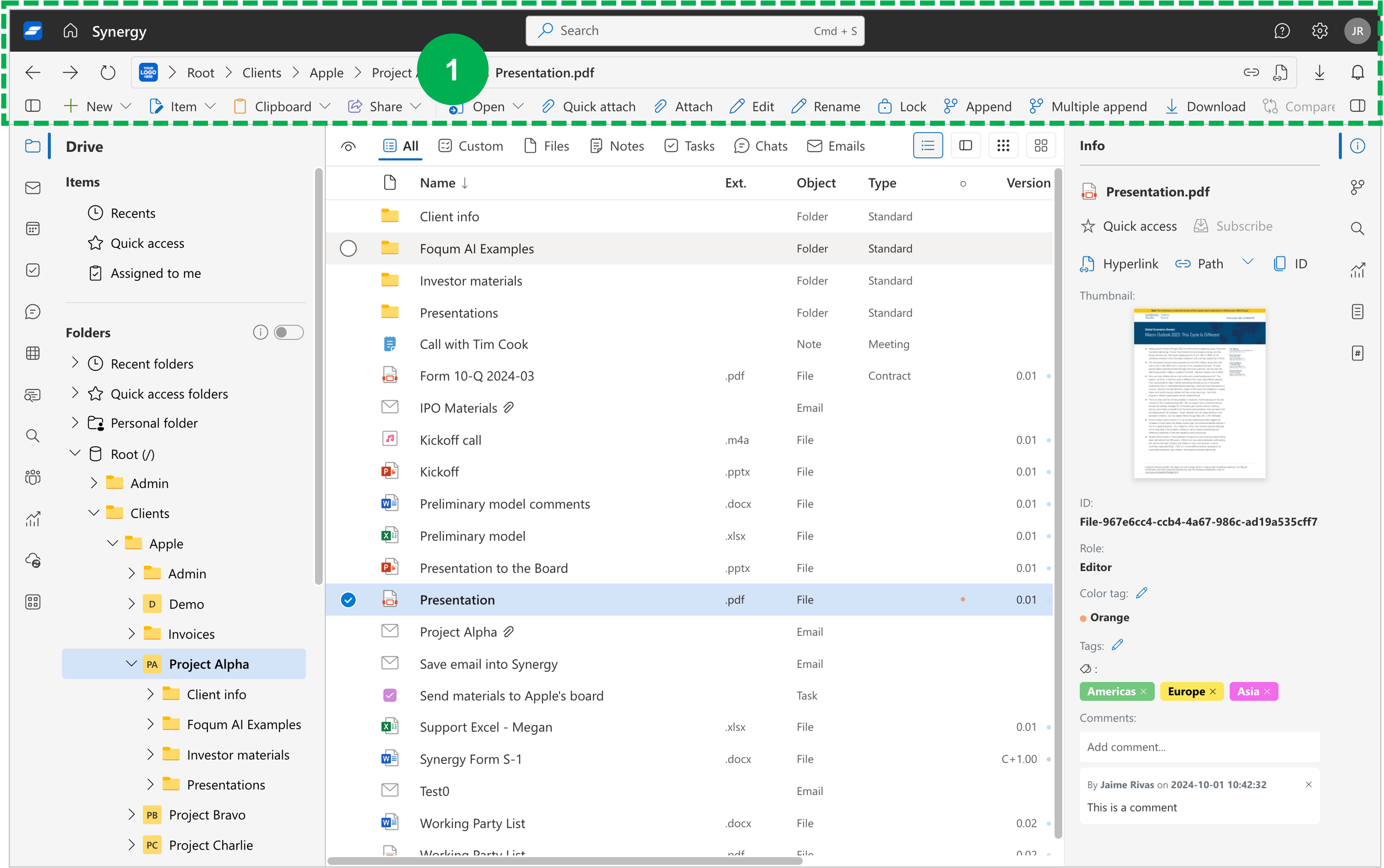
- Navigation Controls: Back, Forward, and Refresh buttons.
- Primary Actions: Context-specific buttons such as 'New File', 'Send Email', etc.
2. Tabs: Default Apps, Optional Apps and Utilities
Functionalities in SynergyOS are organized across configurable tabs. These tabs include the default apps, optional apps and utilities.
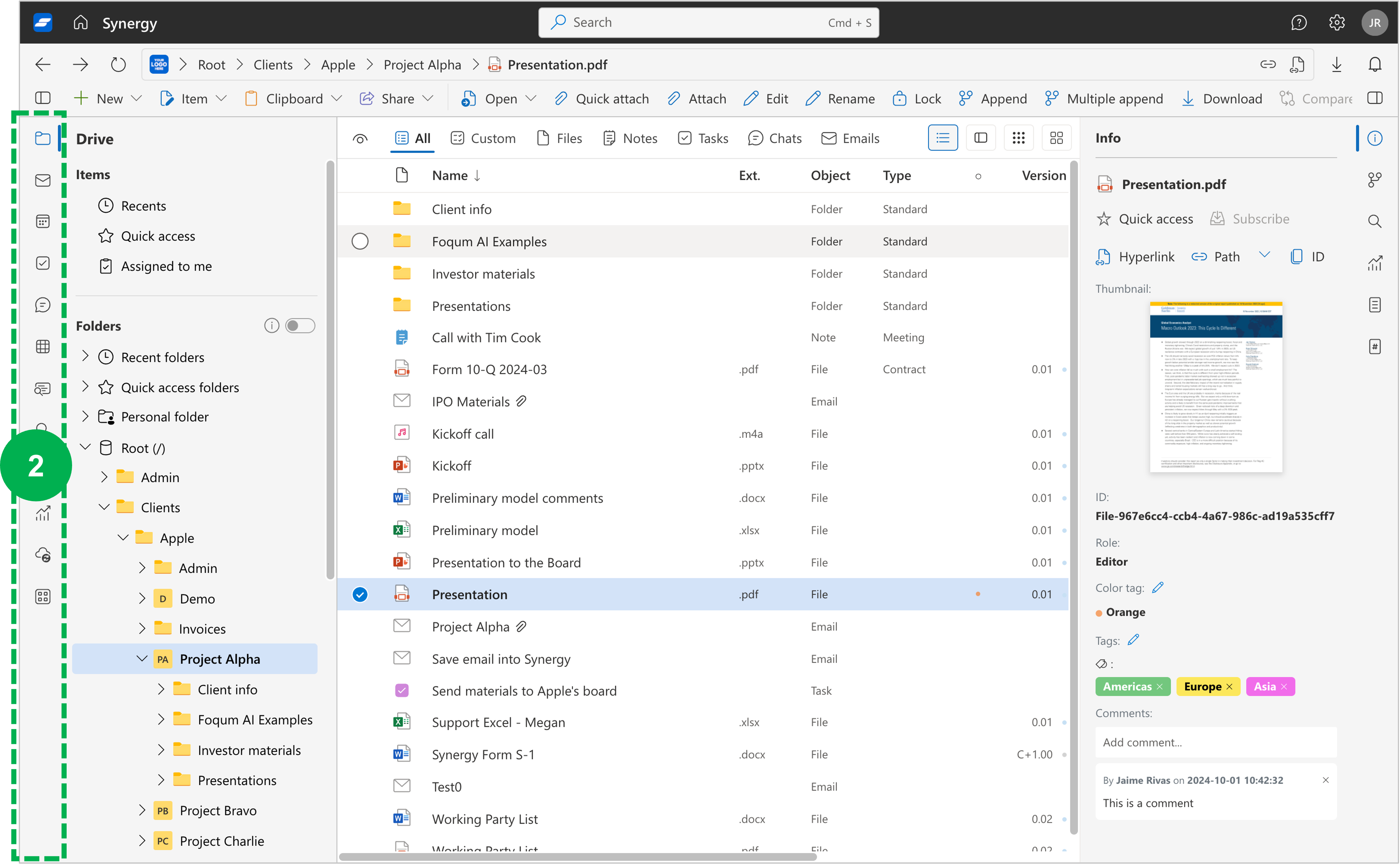
Default Apps
- Drive: Access, manage, and share files.
- Email: Send and receive emails within SynergyOS.
- Calendar: Schedule events and manage your calendar.
- Notes: Create and organize your notes.
- Tasks: Organize and manage your tasks efficiently.
- Chats: Communicate instantly with team members.
- CRM: Manage contacts, companies, and projects.
- Search: Search across all items in the repository.
Optional Apps
- Collections: custom metadata items.
- Workflow: workflow automation.
Utilities
These tabs provide additional functionalities and can be customized based on your preferences.
3. Navigation Pane
The navigation pane adjusts content and structure based on the active tab, enhancing the browsing experience.
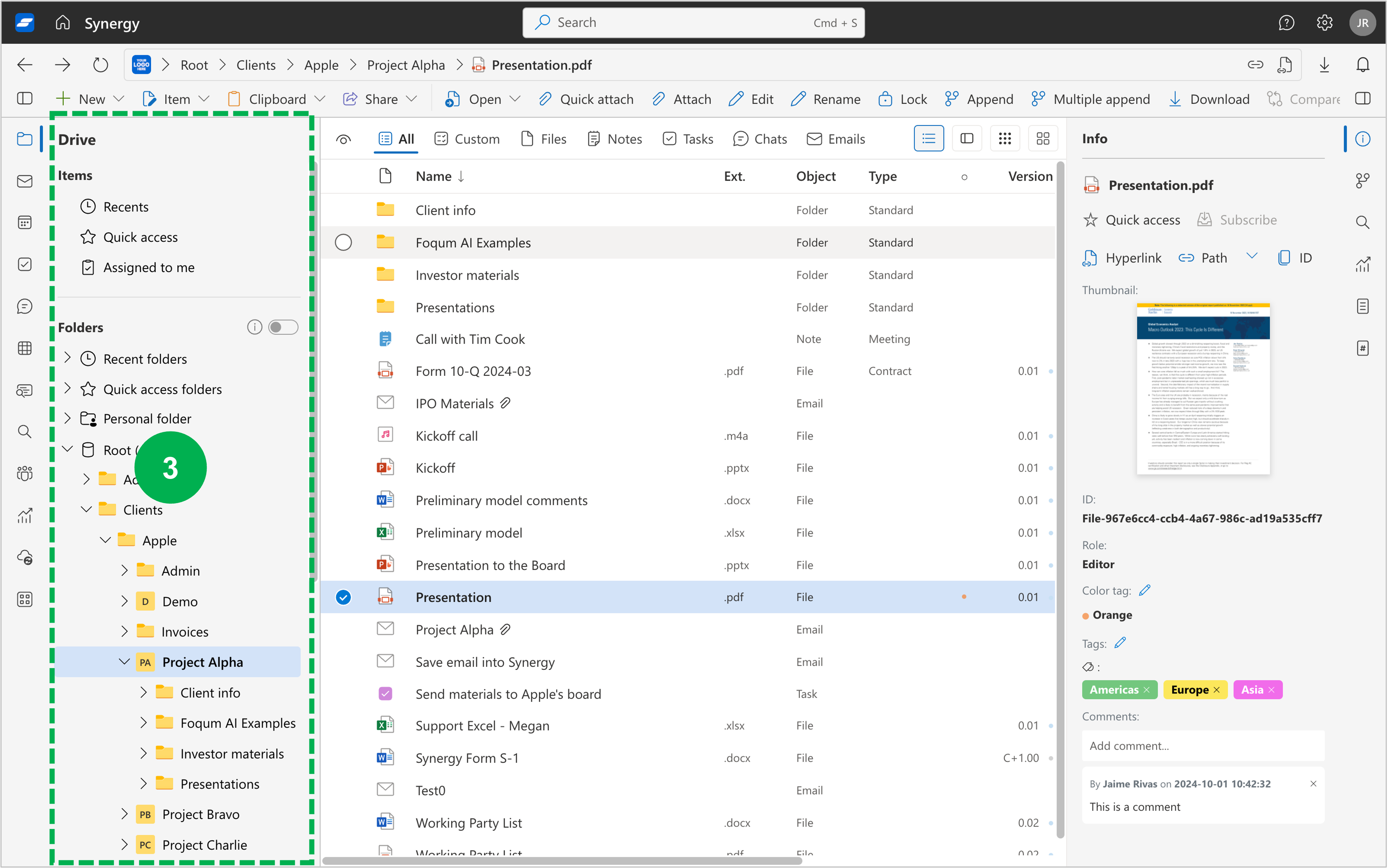
For instance, in the Drive tab, it features:
- Recents: Displays the files and folders you have recently used.
- Quick Access: Provides shortcuts to frequently accessed files and folders.
- Your Folders: Showcases the folders you have access to.
- Filters: Apply filters to view specific files in the selected folder.
4. Items and Views
Allows you to filter items and select different view options.
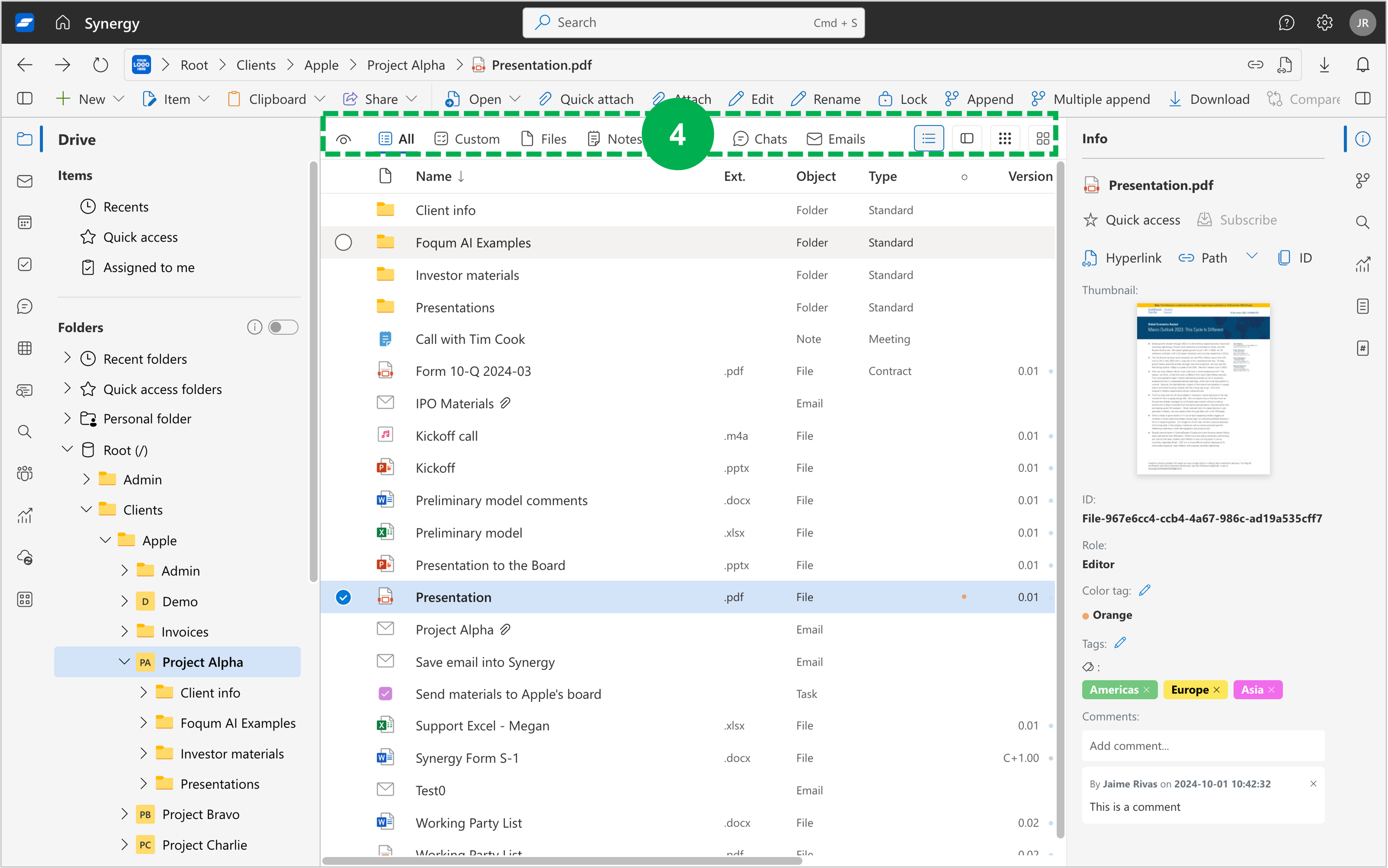
- Filtering: Use filters to narrow down items based on criteria such as file type, date modified, tags, etc.
- View Options: Switch between list view, grid view, or other available layouts to suit your preference.
5. Main View
The main view displays the contents of the selected folder or category. It begins with a header displaying column titles for an organized view of your folders and files.
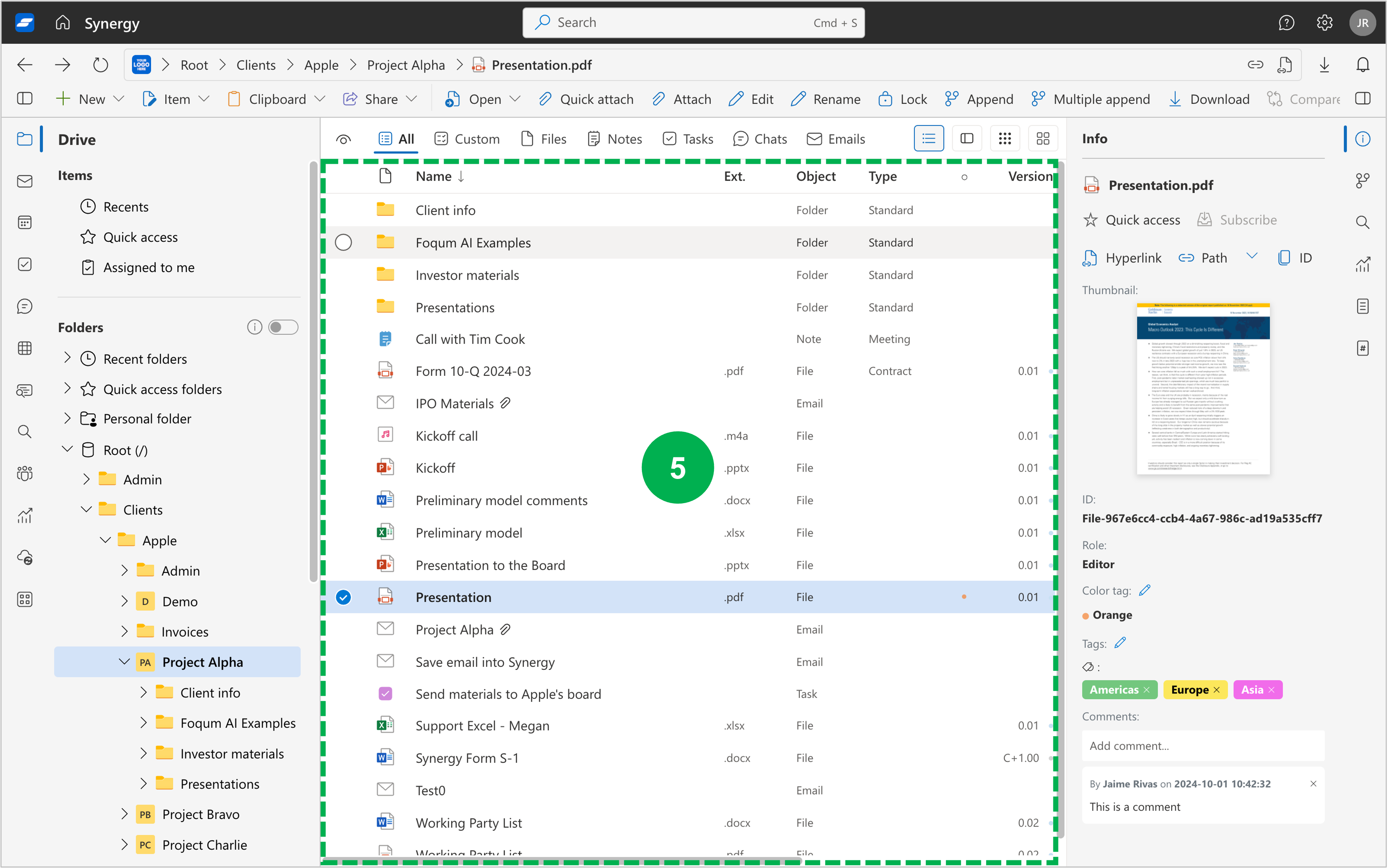
- Sorting: Click any column heading (e.g., Name, Date Modified, Size) to sort the items accordingly.
- Customization: Adjust columns to show information most relevant to you.
- Viewing Modes: Choose between list view, grid view, etc., for user convenience.
6. Details Tabs
Certain tabs within the Details Pane are common across different sections of SynergyOS, offering a consistent user interface for viewing and managing metadata, regardless of the type of item selected. Other tabs change depending on context.

Some examples of Details Tabs include:
- Info: Displays the key metadata of the item.
- Versions: Item version control.
- Search: Search within the content of the selected item.
- Activity: View all activities related to the item.
7. Details Pane
The Details Pane in SynergyOS furnishes a rich set of information and actions across various tabs. The tabs' availability and nature are contextual, based on the section and the type of selected item.
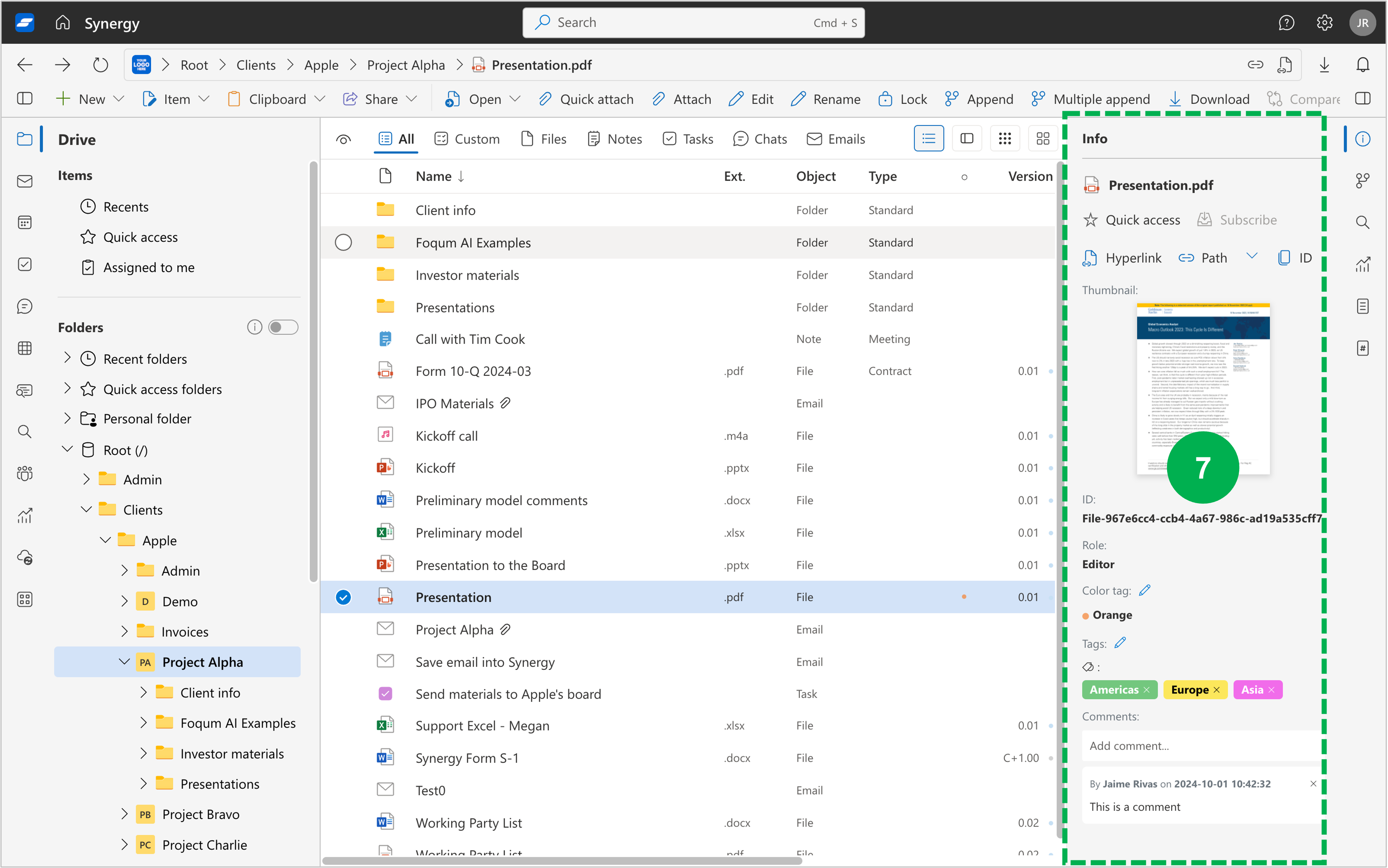
3. Synergy Tools / Synck App
The Synergy Tools / Synck Application bridges the SynergyOS cloud repository with your local file system on Windows or Mac. It enhances collaboration and offline access.
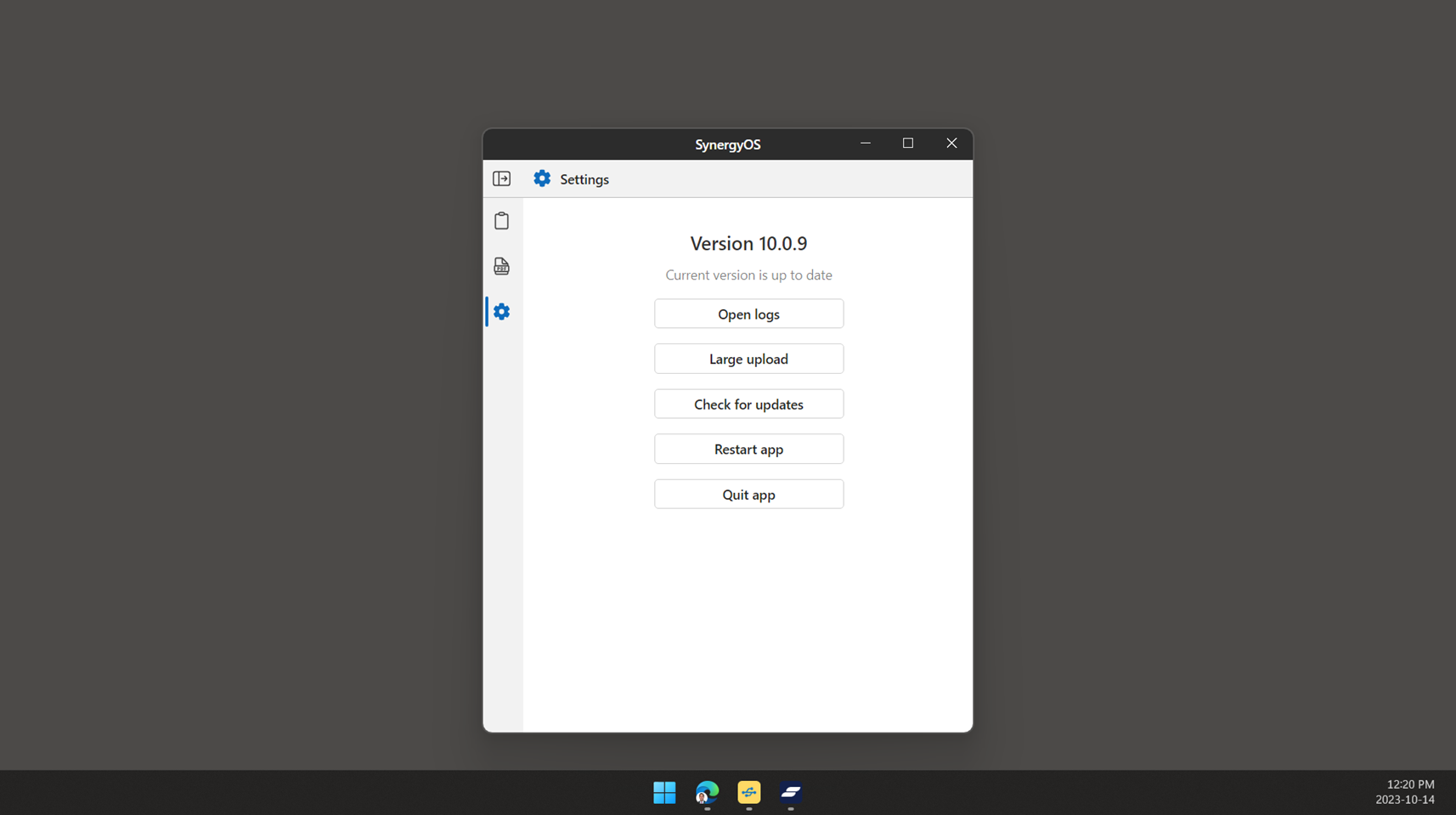
Key Functionalities
1. Real-Time Syncing and File Management
- Local Editing: Open and edit files with desktop applications.
- Automatic Sync: Changes are automatically synced back to SynergyOS when the file is closed.
- Unified Workspace: Ensures the central repository remains updated.
2. Offline Work via Checkout
- Checkout for Offline Use: Work on files and folders offline using the 'Synergy Checkout' folder.
- Local Edits: Edits are made locally and can be reviewed later.
- Commit Changes: After offline work, commit changes back to the repository or revert if needed.
3. Temporary File Access via SynergyOS Clipboard
- Temporary Access: Bring files to your local system for quick access.
- Non-Impactful Edits: Temporary files won't affect the central repository unless changes are saved.
4. Large Uploads Monitoring
- Efficient Handling: Manages the upload of large files effectively.
- Resumable Uploads: Resumes uploads after interruptions.
- Uploads Section: Monitor progress and manage uploads.
4. Mobile Application
The SynergyOS Mobile Application, available on iOS and Android, ensures convenient and quick access on the go.
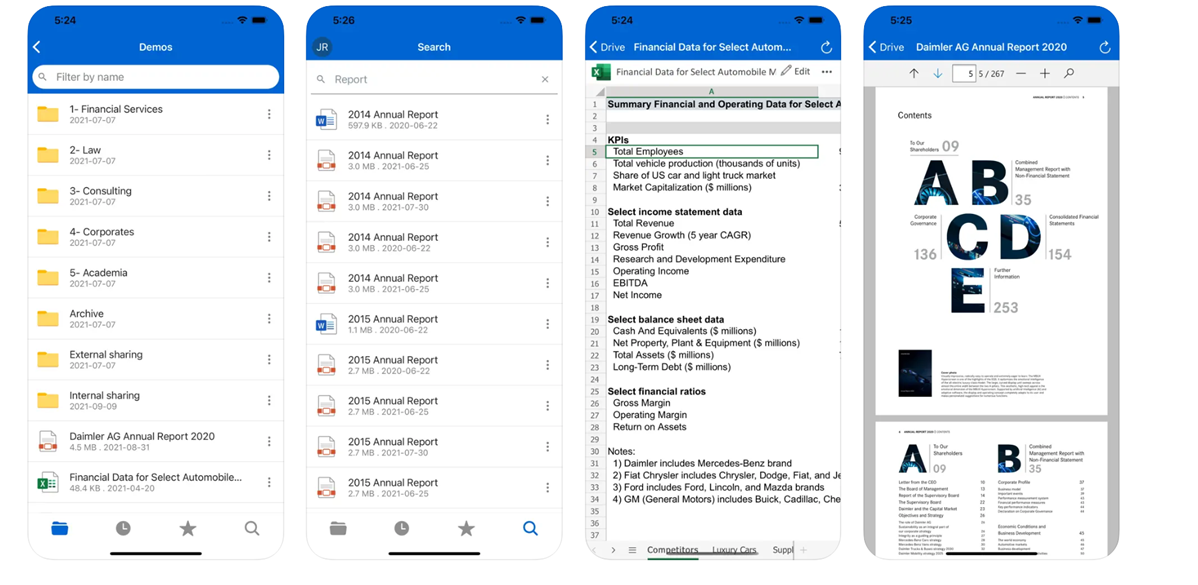
Features
- Access to Core Apps: Use Drive, Email, Calendar, Notes, Tasks, Chats, and CRM directly from your mobile device.
- Real-Time Notifications: Stay updated with instant alerts on messages, tasks, events, and more.
- User-Friendly Interface: Optimized for mobile devices with intuitive navigation.
- Security: Ensures data security with encryption and authentication protocols.